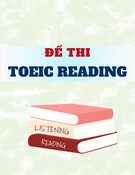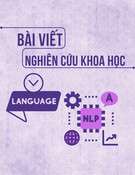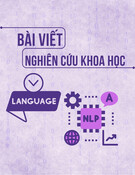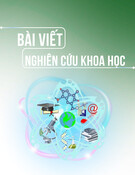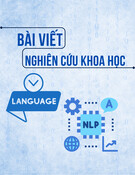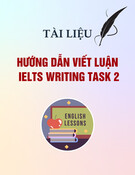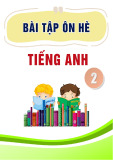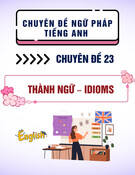
TNU Journal of Science and Technology
229(12): 187 - 193
http://jst.tnu.edu.vn 187 Email: jst@tnu.edu.vn
USING DIGITAL STORYTELLING
TO IMPROVE GRADE 6 STUDENTS’ LISTENING COMPREHENSION
Nguyen Thi Hong Chuyen1*, Dao Duy Thien2
1TNU - University of Education
2Trung Tam Primary and Secondary School - Yen Bai province
ARTICLE INFO
ABSTRACT
Received:
03/6/2024
This study aimed to investigate the impact of digital storytelling on
improving grade 6 students’ listening comprehension at a primary and
secondary school in a mountainous province in Vietnam. The research
aims were (1) to investigate how digital storytelling impacts grade 6
students’ listening comprehension; and (2) to determine students'
attitudes toward using digital storytelling to improve listening
comprehension. Research design was action research with the direct
participation of the researcher and 38 students of grade 6A. A
questionnaire and tests were used as data collection tools for analysis.
Research results showed that digital storytelling was effective in
improving students' listening comprehension and that students had
positive attitudes towards using digital storytelling activities to improve
their listening comprehension. Through a dynamic and interactive
platform of using digital storytelling, students could develop their
listening comprehension, thereby preparing them for more advanced
levels of language learning.
Revised:
08/8/2024
Published:
08/8/2024
KEYWORDS
Digital storytelling
Dynamic and interactive platform
Listening comprehension
Attitudes
Action research
SỬ DỤNG KỂ CHUYỆN KỸ THUẬT SỐ ĐỂ NÂNG CAO KHẢ NĂNG NGHE HIỂU
CỦA HỌC SINH LỚP 6
Nguyễn Thị Hồng Chuyên1*, Đào Duy Thiện2
1Trường Đại học Sư phạm - ĐH Thái Nguyên
2Trường Tiểu học và THCS Trung Tâm - huyện Lục Yên - tỉnh Yên Bái
THÔNG TIN BÀI BÁO
TÓM TẮT
Ngày nhận bài:
03/6/2024
Nghiên cứu này nhằm mục đích khảo sát tác động của việc ứng dụng kể
chuyện số vào dạy học trong việc nâng cao kỹ năng nghe hiểu cho học
sinh lớp 6 tại một Trường Tiểu học và THCS thuộc một tỉnh miền núi ở
Việt Nam. Mục tiêu của nghiên cứu bao gồm (1) Xác định xem kể
chuyện kỹ thuật số tác động như thế nào đến khả năng nghe hiểu của học
sinh lớp 6; (2) Xác định thái độ của học sinh đối với việc sử dụng kể
chuyện kỹ thuật số để nâng cao kỹ năng nghe hiểu. Thiết kế nghiên cứu
là nghiên cứu hành động với sự tham gia trực tiếp của nhà nghiên cứu và
38 học sinh lớp 6A. Bảng câu hỏi và bài kiểm tra được sử dụng làm công
cụ thu thập dữ liệu phục vụ cho mục đích nghiên cứu. Kết quả nghiên
cứu cho thấy kể chuyện kĩ thuật số có hiệu quả trong việc nâng cao khả
năng nghe hiểu cho học sinh và học sinh có thái độ tích cực đối với việc
sử dụng các hoạt động kể chuyện kĩ thuật số nhằm nâng cao khả năng
nghe hiểu của mình. Thông qua cách tiếp cận tương tác dựa trên câu
truyện bằng việc sử dụng kể chuyện kĩ thuật số, học sinh có thể dễ dàng
và hứng thú trong phát triển khả năng nghe hiểu của mình, từ đó chuẩn bị
cho các cấp độ học ngôn ngữ nâng cao hơn.
Ngày hoàn thiện:
08/8/2024
Ngày đăng:
08/8/2024
TỪ KHÓA
Kể chuyện kĩ thuật số
Dạy học
Nghe hiểu
Thái độ
Nghiên cứu hành động
DOI: https://doi.org/10.34238/tnu-jst.10527
* Corresponding author. Email: chuyenknn@gmail.com





